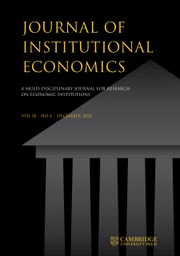Article contents
From Quaker Oats to Virgin Brides: Brand capital as a complex adaptive system
Published online by Cambridge University Press: 16 November 2017
Abstract
We examine brand building from the perspective of complex adaptive systems. Brand building is a neglected engine of capital formation, innovation and institutional change in market economies. The nature of brands and the service streams they generate have been construed too narrowly. Brands are capital: entrepreneurs use brands as market-making devices that create value and capture profit, while consumers use brands to derive psychic income and lifestyle benefits. Brands are building blocks that can be combined in production to fill perceived gaps in brand architectures and capital structures. These structures are themselves complex adaptive systems. In an era of digital technological platforms, complex generative networks are the institutional locus of brand creation and brand extensions. Innovation in brand building is a socially distributed, service-intensive and interpretive process; it entails combinatorial experiments in resource integration by heterogeneous and socially connected actors, such as entrepreneur-producers, end-users and distributors. Legal brand owners never have total control over their brands – customer networks often exercise substantial de facto control rights (economic property rights) over the use and transformation of brands. Both the entire branding system (as a form of organization) and individual iconic brands can crystallize into relatively stable institutions that orient and coordinate market behaviour.
- Type
- Research Article
- Information
- Journal of Institutional Economics , Volume 14 , Special Issue 6: Special Issue on Innovation and Institutions From The Bottom Up , December 2018 , pp. 1071 - 1096
- Copyright
- Copyright © Millennium Economics Ltd 2017
References
- 10
- Cited by


